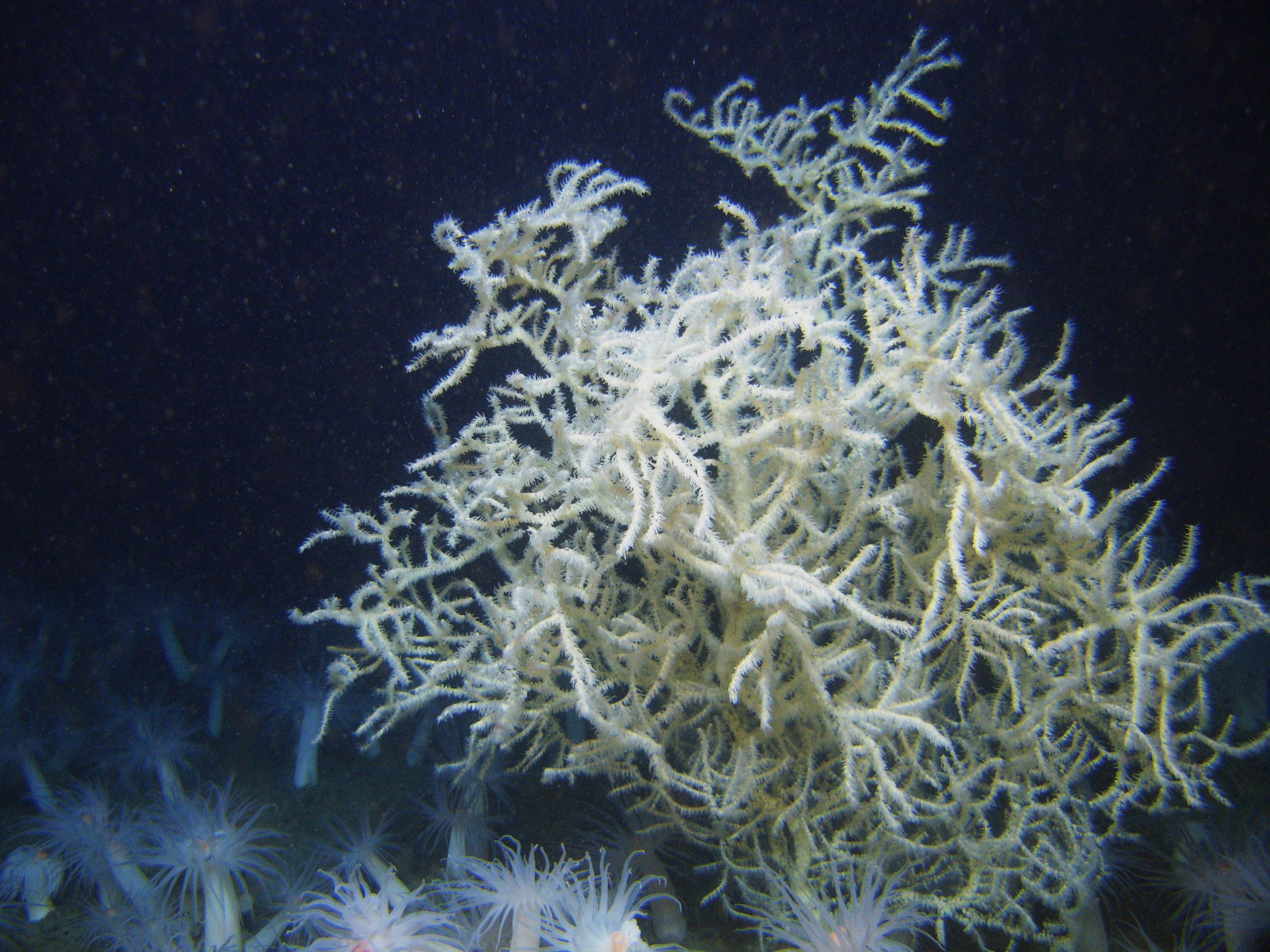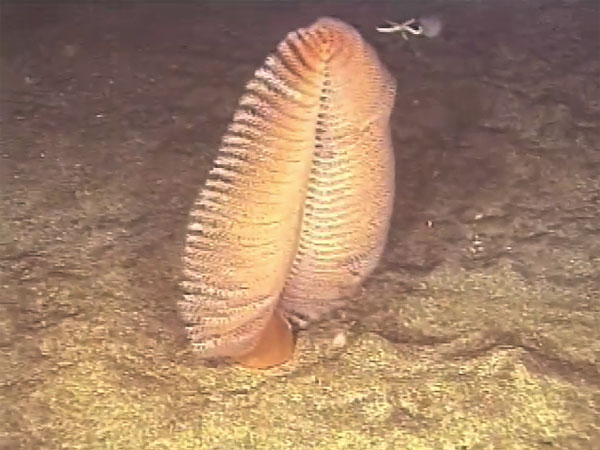GMFMC Coral Descriptions
Black Coral (or Antipatharians) – a group of branching corals are often associated with deep reef habits. Although their exterior flesh is usually red, white, or orange, their internal skeleton is black. Black corals can live to for thousands of years. In fact, one from the Gulf of Mexico was aged to be more than 2000 years old. These corals are a valuable tool for scientists because their skeletons contain rings, like trees. The rings have chemical signatures that allow scientists to learn about past oceanic environments. Black corals have also been harvested for jewelry, a practice which is not sustainable. Image of Leiopathes glaberrima black coral courtesy of NOAA.

Stony Coral (or Scleractinians) – hard corals that are the primary reef building corals of the world. These corals have skeletons made of calcium carbonate (Aragonite), covered with polyps. All stony corals have a symbiotic relationship with algae that lives inside the polyps. The algae, called zooxanthellae, produce oxygen and other nutrients that are used by the polyps; the polyps produce carbon dioxide that is used by the algae. Brain corals and elkhorn corals are some of the more well known stony corals. Image of Lophelia pertusa courtesy of Lophelia II: Reefs, Rigs, and Wrecks 2009 Expedition, NOAA/BOEM

Octocoral (or Anthozoans) – non reef-building soft corals. Octocorals can take on many different shapes, sizes, and colors but are easily identified in any form because they all have eight-fold symmetry. These corals are very hardy and can be some of the easiest corals to grow in aquariums. Image of Iridogorgia octocoral bush courtesy of NOAA Okeanos Explorer Program, Gulf of Mexico 2014 Expedition.

Sea Pen – colonies of individual cnidarians, which are related to jellyfish-like organisms. They’re named sea pens because some are shaped like quill pens, but many sea pen species don’t share the feathery appearance. All sea pens individuals resemble anemones and have eight tentacles, but they’re distinguishable from octocorals because their polyps are specialized to perform different functions. Sea pens exhibit bioluminescence and someare able to emit a bring green light when disturbed. Image of Deep-sea Sea pen courtesy of Bioluminescence Team 2009, NOAA-OER.

Sponge – animals with bodies full of pores that allow water to pass through them to supply oxygen and food, and remove waste. Sponges can reproduce sexually or asexually by fragmenting, budding and producing gemmules that turn into new sponges. Some deepwater sponges, the Hexactinellids, are called glass sponges because they resemble a cup and are made up of siliceous spicules. Image of Venus flower basket glass sponges courtesy of NOAA Okeanos Explorer Program, Gulf of Mexico 2012 Expedition.

Contact us
For more information on how to use the Gulf of Mexico Corals and Coral Reefs viewer, or for technical questions related to its content, contact Contact us